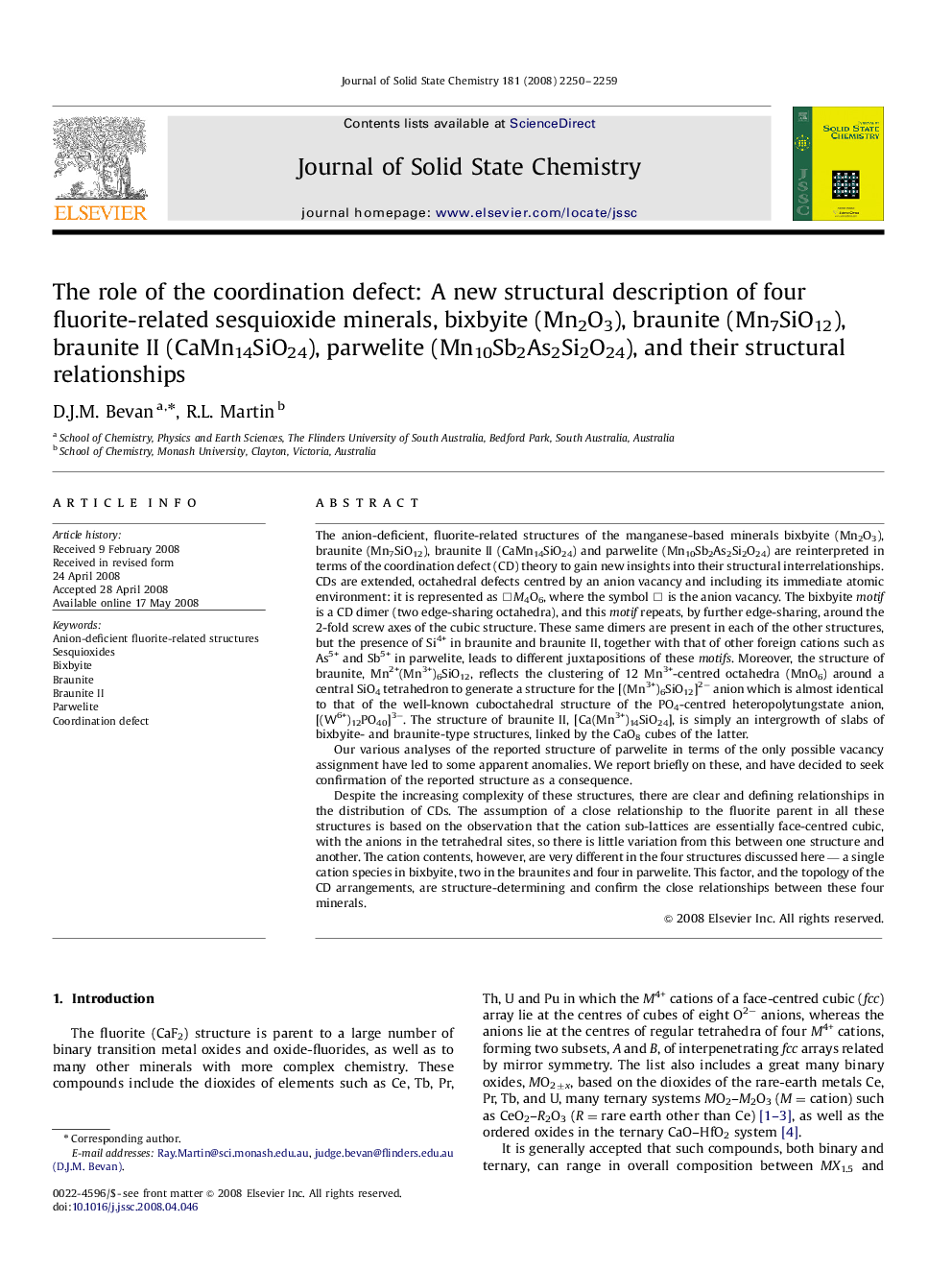| کد مقاله | کد نشریه | سال انتشار | مقاله انگلیسی | نسخه تمام متن |
|---|---|---|---|---|
| 1332718 | 979052 | 2008 | 10 صفحه PDF | دانلود رایگان |

The anion-deficient, fluorite-related structures of the manganese-based minerals bixbyite (Mn2O3), braunite (Mn7SiO12), braunite II (CaMn14SiO24) and parwelite (Mn10Sb2As2Si2O24) are reinterpreted in terms of the coordination defect (CD) theory to gain new insights into their structural interrelationships. CDs are extended, octahedral defects centred by an anion vacancy and including its immediate atomic environment: it is represented as □M4O6, where the symbol □ is the anion vacancy. The bixbyite motif is a CD dimer (two edge-sharing octahedra), and this motif repeats, by further edge-sharing, around the 2-fold screw axes of the cubic structure. These same dimers are present in each of the other structures, but the presence of Si4+ in braunite and braunite II, together with that of other foreign cations such as As5+ and Sb5+ in parwelite, leads to different juxtapositions of these motifs. Moreover, the structure of braunite, Mn2+(Mn3+)6SiO12, reflects the clustering of 12 Mn3+-centred octahedra (MnO6) around a central SiO4 tetrahedron to generate a structure for the [(Mn3+)6SiO12]2− anion which is almost identical to that of the well-known cuboctahedral structure of the PO4-centred heteropolytungstate anion, [(W6+)12PO40]3−. The structure of braunite II, [Ca(Mn3+)14SiO24], is simply an intergrowth of slabs of bixbyite- and braunite-type structures, linked by the CaO8 cubes of the latter.Our various analyses of the reported structure of parwelite in terms of the only possible vacancy assignment have led to some apparent anomalies. We report briefly on these, and have decided to seek confirmation of the reported structure as a consequence.Despite the increasing complexity of these structures, there are clear and defining relationships in the distribution of CDs. The assumption of a close relationship to the fluorite parent in all these structures is based on the observation that the cation sub-lattices are essentially face-centred cubic, with the anions in the tetrahedral sites, so there is little variation from this between one structure and another. The cation contents, however, are very different in the four structures discussed here — a single cation species in bixbyite, two in the braunites and four in parwelite. This factor, and the topology of the CD arrangements, are structure-determining and confirm the close relationships between these four minerals.
The anion-deficient, fluorite-related structures of the manganese-based minerals bixbyite (Mn2O3), braunite (Mn7SiO12), braunite II (CaMn14SiO24) and parwelite (Mn10Sb2As2Si2O24), are reinterpreted in terms of the Coordination Defect (CD) theory to gain new insights into their structural interrelationships. CDs are extended, defects centred by an anion vacancy and including its immediate atomic environment of 4 tetrahedrally coordinated metals and 6 octahedrally coordinated O atoms: it is represented as □M4O6, where the symbol □ is the anion vacancy. The arrangement of □M4 tetrahedra in bixbyite is shown in the [111] projection.Figure optionsDownload as PowerPoint slide
Journal: Journal of Solid State Chemistry - Volume 181, Issue 9, September 2008, Pages 2250–2259